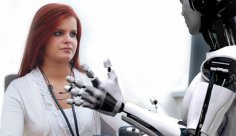
Information technology is often discussed. So often that the words lose their density: IT seems to be everything and nothing. It's about a way of thinking, living, and building. Information technology isn't an addition to life, but its new foundation.
We no longer simply use technology—we live in it. It shapes the economy, culture, education, communication, security, and even our way of remembering. And with each passing year, this digital layer becomes not a superstructure, but a foundation. The question is no longer whether to embrace it, but how.
Information technology – talking to the world through numbers
Everything that helps us manage data: collect, store, transmit, and understand it. It sounds rather dry—computers, the internet, neural networks, databases, clouds. But if you take a closer look, we're looking at more than just a bunch of buzzwords, but an entire living organism ingrained in our everyday lives—from the alarm clock on your phone to the satellite map you use to find a cafe.
Yes, not just a “technokit,” but a connected system that has long since become part of everyday life. Computers, the internet, neural networks, clouds… At first, it seems like we're looking at a list from an instruction manual. But in reality, it's practically the nervous system of the modern world: flexible, connected, always in motion.
Humanity needs this because we have no other path. The world has become too complex, too fast, and too saturated. We can't cope without information technology—not just in terms of comfort, but in a literal, everyday sense.
Specifically:
- In healthcare, IT makes it possible to model epidemics, make diagnoses from images, manage supply systems, and create personalized treatments;
- in education, without them, it will be difficult to build platforms where knowledge becomes accessible from everywhere;
- in ecology, they make it easier to monitor the state of the planet, predict changes, and find bottlenecks;
- in economics, it is easier to jointly analyze markets, build new models, and optimize processes;
- In management, it is clear that decisions must be made based on data, not guesswork.
Information technology is, so to speak, the lens through which we view the world. We can no longer imagine everyday life without it.
Why “Digital” Isn't Always About Numbers
A curious paradox: digitalization seems to make everything infinitely rational. But the deeper we delve into it, the clearer it becomes—it's not just about logic, but about people. Interfaces, usability, and algorithms require an understanding of psychology, ethics, and perception. A good information system isn't one that “calculates” but one that helps. Specifically, it doesn't replace people, but rather “enhances” them.
The digital world is far from soulless. It becomes what we create it to be. And if we want it to be convenient, fair, and sustainable, we'll have to think not only about technology but also about the meanings behind it.
Information technology is anything but neutral. It can be both a salvation and a trap. When everything is digital, it's easy to lose the distinction between reality and the model. When decisions are based on an algorithm, the question arises: what's behind it, behind the algorithm? Who wrote the code, trained the system, and ultimately is responsible for any potential errors?
The digital future isn't just a technological leap, but a challenge of maturity. We must learn to live with new tools without becoming their hostage.
Information technology is by no means a fad, not a mere trend for a few years. It can be described as a new habitat. Just as writing was once a revolution, then the printing press, then electricity. Today's digital leap is no less significant.
Information technology is already permeating biology, architecture, and everyday life. The way we work, learn, love, remember, and miss others is marked by a digital trace. And it grows ever more dense with each passing year. We don't just “touch” technology—we breathe it.
And it's no longer just a matter of what technologies we create. It's about who we will be within these technologies. They not only give power, but also demand responsibility. The choice remains human: what to look at, what to build, what to preserve.
Because at the very end of any code, any algorithm, any “smart” solution, one question always remains: What exactly did you want to achieve?





